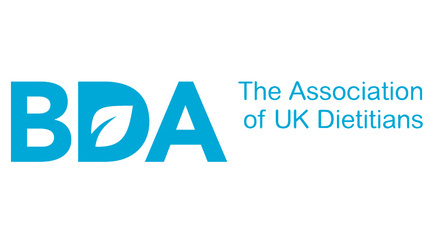Michael Titmus critically appraises the evidence base for time-restricted eating and considers the implications for dietetic practice.
It is estimated that the typical eating period (the time between the first food eaten during the day and the last) for the majority of the American population is >12 hours, with over 50% consuming food over a period of >15 hours on a daily basis.1 The eating behaviour of the UK population has changed over recent decades, with it now being common to eat a greater percentage of daily food in the later part of the day.2
Circadian rhythms affect cellular pathways (including those related to metabolism3) in almost every tissue in the body.4 They have evolved in humans to reflect their diurnal existence, influencing physiological processes within a 24-hour cycle.5 A variety of environmental patterns, e.g. eating behaviour and exposure to light, modulate the circadian system.6 Growing evidence demonstrates that misalignment between environmental patterns, such as meal timing, and circadian rhythms has adverse consequences for metabolic regulation7 and cardiometabolic health.8,9 Furthermore, disruption of the circadian system is known to promote obesity,10 with meal timing postulated as a significant influence on weight management.11
Chrononutrition is an area of nutritional science which acknowledges the influence of meal timing on health outcomes independent of the quality or quantity of food eaten. Health promotion approaches that take account of circadian rhythms are gaining increased interest among both health professionals and the general population.12 Time-restricted eating (TRE) has emerged as a dietary approach that aims to optimise metabolic health via improved circadian rhythmicity.4
Calorie restriction is not a requirement of TRE, but through consolidating daily food intake to a consistent daily window, TRE promotes a period of daily fasting of twelve to twenty hours,13 aligning with endogenous molecular rhythms. Whilst acknowledging that a number of larger research trials are either in progress or scheduled to commence in the near future (demonstrating the growing interest in TRE), the aim of this article is to review and critically appraise the current research focusing on the efficacy of TRE to influence weight management and metabolic health.
TRE and body weight
Cienfuegos et al.14 conducted a ten-week randomised parallel-arm trial, which included an eight-week intervention period involving 58 adults with obesity focusing on late-TRE (where the TRE window is positioned later in the day). Individuals were randomised to either four-hour TRE (ad libitum eating between 3-7pm), six-hour TRE (ad libitum eating between 1-7pm), or control group. Interestingly, weight loss was comparable between the intervention groups (~3%) after eight weeks versus controls, with the stricter four-hour TRE not resulting in greater weight loss compared to six-hour TRE. This was achieved through a lower energy consumption of around 550kcal daily (approximate 30% reduction) across both TRE regimens, accomplished without participants calorie monitoring. Of note is that through shortening the eating period, participants spontaneously reduced their energy intake, highlighting the potential of TRE as a weight loss intervention.
However, questions remain regarding the long-term sustainability of such severe TRE, whilst the potential impact on nutrient absorption and long-term nutritional status remains unknown. There is a requirement to extend the focus of TRE research to better understand its effects on dietary quality and biological processes. In contrast to Cienfuegos et al.,14 a 12-week randomised-controlled trial of 116 adults with overweight or obesity by Lowe et al.15 found that a late-TRE intervention (TRE window between 12-8pm), again where food was consumed ad libitum, only resulted in a modest weight reduction (1.17%), which was not statistically significant compared to controls (p=0.63).
The timing of the TRE period is important to consider. Both Cienfuegos et al.14 and Lowe et al.15 instructed participants to delay the first meal of the day until the afternoon. An association exists between eating a greater proportion of the daily calories in the later part of the day and higher BMI and percentage body fat.16,17 Furthermore, eating a greater proportion of daily calories in the early part of the day can support weight loss,18,19 with a morning breakfast associated with improved weight management.20 Taken together, the timing of the TRE period may be as important as the length of restriction. TRE periods scheduled earlier in the day may be preferable through alignment with circadian rhythms, thus supporting improved outcomes.
There is a need for future research to determine whether early-TRE (TRE window positioned earlier in the day) is advantageous compared to late-TRE regarding weight loss, with long-term clinical trials to assess the overall efficacy of TRE as a weight management intervention.
TRE and body composition
Lean mass, including appendicular lean mass, has contributed approximately 65% of the total body weight lost during TRE intervention,15 which is more than double that normally found during weight loss.21 Reduced appendicular lean mass is associated with impaired physical function and quality of life.22 A further complication of this unfavourable change in body composition is the increased risk of weight regain.23
Unfortunately, protein intake was not measured by Lowe et al.,15 therefore there is uncertainty whether TRE led to an alteration in protein consumption. In addition, the authors noted a reduced physical activity level in the TRE group, which could exacerbate loss of lean mass. Whether TRE directly influences muscle loss is questionable. Consequently, research needs to extend to explore the potential risk of TRE in individuals at increased risk of sarcopenia and whether modifying protein content and the distribution of protein intake within the TRE period can limit the loss of lean mass.
TRE and blood pressure
In an original study, Sutton et al.24 conducted a five-week randomised crossover trial involving eight pre-diabetic males with obesity aimed at assessing whether a six-hour early-TRE period (where the last meal is eaten before 3pm) elicits metabolic benefits regardless of weight loss. In order to achieve this, dietary intervention was both isocaloric and eucaloric, successfully ensuring weight maintenance throughout the study period. Large reductions in systolic (11+/-4 mmHg) and diastolic (10+/-4 mmHg) blood pressure (BP) were achieved with early-TRE compared to control schedule, both reaching statistical significance (p=0.03).
This reduction is comparable to the clinical effects of certain antihypertensive medications.25 The authors postulated that this large reduction in BP may be related to the effect of early-TRE in reducing insulin levels or aligning salt intake with the circadian system driven upregulation of salt excretion that occurs earlier in the day. In contrast, Cienfuegos et al.14 observed no change in BP, but their study was at risk of Type 2 error due to being underpowered for this secondary outcome measurement. Although a significant reduction in diastolic BP was found through late-TRE by Lowe et al.,15 between group differences were not statistically significant. Moreover, Sutton et al.24 measured BP in the morning only, potentially overestimating the effects of TRE. Whilst early-TRE may improve BP independent of weight reduction, larger studies including both men and women comparing different timings of TRE are required to better assess the effect of TRE on BP.
TRE and autophagy/longevity
The potential of TRE to promote autophagy and support antiaging effects is an emerging area of interest. A small randomised crossover trial comparing a four-day, six-hour early-TRE eating schedule to a four-day, 12-hour eating period under isocaloric conditions found that early-TRE favourably influenced brain-derived neurotrophic factor (BDNF) as well as SIRT1 and LC3A genes.26 This demonstrates a possible antiaging effect of early-TRE. Unfortunately, changes in other outcome measures were not statistically significant, although it was acknowledged that for a number of endpoints the study was likely underpowered due to the small sample size or effect sizes being underestimated through failure to measure at key timepoints.
From the same study, Ravussin et al.27 researched how meal timing influences metabolic hormones and appetite. They reported that appetite-stimulating hormone ghrelin was reduced by early-TRE, with satiety hormone PYY raised in the evening. These hormonal changes coincided with a reduced desire to eat during the day, a finding corroborated by Sutton et al.24
Although it would be expected that restricting the daily eating period would increase appetite levels secondary to the extended fasting duration, paradoxically early-TRE appeared to stabilise hunger levels through the day27 and enhanced evening satiety.24 By coordinating with circadian rhythms, early-TRE may support weight management through positively modulating appetite.
TRE and glucose tolerance/insulin sensitivity
Hutchison et al.28 undertook a crossover trial involving 15 men with obesity at risk of type 2 diabetes, comparing the effect of early-TRE and late-TRE (both nine-hour eating periods) on glucose tolerance. Whilst glucose tolerance improved in both TRE periods, fasting glucose was only significantly lowered by early-TRE. This is in disagreement with Sutton et al.,24 who found that a five-week period of early-TRE did not affect glucose levels. However, in this trial glucose levels were only measured in the morning. The circadian system drives improved glucose tolerance in the morning,29 therefore 24-hour glucose levels would be expected to reduce through shifting meal timing to the early part of the day. Considering this, Sutton et al.24 potentially underestimated glycaemic response to early-TRE through an inadequate measurement protocol.
Interestingly, peak postprandial glucose levels were not higher in the early-TRE arm reported by Jamshed et al.,26 despite the meals being eaten over a shorter period. The authors postulated that eating meals in short succession eliminates the delay between increasing glucose levels and insulin response, therefore reducing glucose peaks. In addition, a late evening meal induces a metabolic response that increases postprandial glucose level following the subsequent day’s breakfast.30,31 An earlier positioned TRE window may improve daily glucose levels and induce an advantageous metabolic response to food consumed on the following day, ultimately reducing insulin resistance and its associated risks to health.
Lowering blood insulin levels can help reverse the vicious cycle of insulin resistance.32 Peak insulin levels were significantly lower after breakfast following eight-hour TRE compared to 15-hour extended feeding in a five-day isocaloric randomised crossover trial.33 Early- TRE has been found to reduce insulin resistance and postprandial insulin level along with improving β-cell function and increasing insulin sensitivity.24 Jamshed et al.26 suggest that morning insulin signalling is improved through early-TRE increasing AKT2 gene expression, which coincided with reduced morning glucose and insulin levels in their study.
It appears that TRE may confer metabolic benefits independent of weight loss, which may be enhanced in individuals exhibiting insulin resistance. Limiting food intake to the early part of the day may also be advantageous, linked to the timing of eating to avoid the body’s declining sensitivity to insulin throughout the day. Despite promising signs, the evidence base is founded on predominantly small studies of short duration, with caution required when interpreting findings. There is a clear need for clinical trials with greater methodological rigor conducted over a longer duration, preferably comparing different timings of TRE, to assess long-term efficacy and enable findings that can be confidently generalised. There is also a question of whether TRE is an acceptable approach for the general population.
Acceptability and safety of TRE
High attrition rates in intermittent fasting research have been reported,34 raising doubts regarding practicality and acceptability.35 In contrast, self-reported adherence to 12-week, eight-hour late-TRE was reported at 83.5% by Lowe et al.15 Similar adherence was reported when TRE windows were more restrictive.14 Whilst the later timing of these eating periods is in keeping with traditional eating patterns, Sutton et al.24 stated that the subjective experience of early-TRE meant that the majority of their participants were amenable to continuing to schedule dinner earlier in the day.
No serious adverse implications of TRE were reported in the literature. Mild events such as headaches, diarrhoea, increased thirst and dizziness were potentially related to TRE intervention,14,24 but occurred in the early stages and resolved by week three following adjustment to TRE.14 Nevertheless, individuals considering TRE will need to be informed of potential transient effects to support adherence. Although TRE research is limited and predominantly conducted under the positivist paradigm, the evidence base is importantly informed by a broader interpretivist viewpoint through recently conducted qualitative research.
Utilising semi-structured interview guides, Bjerre et al.36 examined through rigorous analysis the experiences and perspectives of participants undertaking TRE intervention. Seventeen participants were recruited from a 12-week randomised controlled trial focussing on the effect of ten-hour TRE in adults with overweight and obesity. Numerous participants reported evening boredom arising through completing eating at an earlier time. Whilst TRE may in theory be an effective strategy for reducing evening eating, which is a common behaviour amongst individuals with obesity,37 the reasons for evening eating can be multifaceted, including emotional drivers. TRE may inadvertently exacerbate existing vulnerability to overeating. Furthermore, certain participants reported moving food such as sweets that were usually eaten in the evening to earlier in the day, or individuals described overeating at meals in order to prevent future hunger expected when fasting. Of note is that participants ultimately realised that they did not experience excessive hunger and discontinued deliberate overeating behaviour. The focus of when to eat did not elicit a focus on what was eaten, with many accommodating habitual food choices into the TRE window with no intention to change unhealthy dietary practices.
Whilst TRE requires less cognitive restraint compared to calorie restriction,38 participants found that planning daily routines took on increased importance with TRE. Setting alarms as prompts and batch cooking meals to support compliance in the event of unforeseen circumstances were helpful strategies undertaken by individuals. Taken together, these perspectives demonstrate the important role of the dietitian in working collaboratively with patients planning to commence TRE, with the aim to reduce the risk of emotional eating, provide reassurance concerning hunger, and offer guidance regarding healthy eating strategies.
Parr et al.33 conducted structured interviews at the end of their short crossover trial, with TRE reported to be a positive experience overall. Corroborating Bjerre et al.,36 social events such as eating out could be challenging, emphasising that TRE can be demanding and difficult to consistently adhere to amongst conflicting daily activities and social dynamics. Adherence could be improved by moving eating periods to later in the day, but this may not be preferable from a metabolic perspective.
Conclusion
Whilst questions remain regarding the effectiveness of TRE, it has a place within a person-centred approach to weight management and metabolic health. There is a need for the evidence base to expand before readily advocating TRE within clinical practice, but dietitians are well placed to provide individualised, informed support to those patients who decide to engage with this strategy.
The prescription of restricted eating windows is an attractive intervention to both practitioners and patients due to its simplicity. However, it is imperative that a broader, holistic perspective is considered with appreciation for social context and potential barriers to change given the potential of TRE to conflict with social norms and routine activities. Engaging individuals to view daily activities more broadly, being open regarding expectations, empowering patients to develop practical strategies to overcome potential barriers to change, and encouraging a focus on improved dietary quality to support nutritional health and optimise outcomes, is key to the role of the dietitian in supporting individualised, sustainable integration of TRE into everyday life.
References
1. Kant, A. (2018) Eating patterns of US Adults: Meals, snacks and the time of eating. Physiology Behavior, 193(Part B): 270-278
2. Almoosawi, S., Winter, J., Prynne, C. Hardy, R. and Stephen, A. (2012) Daily profiles of energy and nutrient intakes: are eating profiles changing over time. European Journal of Clinical Nutrition, 66(6): 678-86
3. Garaulet, M. and Madrid, J. (2010) Chronobiological aspects of nutrition, metabolic syndrome and obesity. Advanced Drug Delivery Reviews, 62(9-10): 967-978
4. Chaix, A., Manoogian, E., Melkani, G. and Panda, S. (2019) Time-restricted eating to prevent and manage chronic metabolic diseases. Annual Review of Nutrition, 39: 291-315
5. Longo, V. and Panda, S. (2016) Fasting, circadian rhythms, and time-restricted feeding in healthy lifespan. Cell Metabolism, 23(6):1048-1059
6. Vitaterna, M., Takahashi, J. and Turek, F. (2001) Overview of circadian rhythms. Alcohol Research & Health, 25(2): 85-93
7. Mason, I., Qian, J., Adler, G. and Scheer, F. (2020) Impact of circadian disruption on glucose metabolism: implications for type 2 diabetes. Diabetologia, 63(3): 462-472
8. Pot, G., Almoosawi, S. and Stephen, A. (2016) Meal irregularity and cardiometabolic consequences: results from observational and intervention studies. Proceedings of the Nutrition Society, 75(4): 475-486
9. Chellappa, S., Vujovic, N., Williams, J. and Scheer, F. (2019) Impact of circadian disruption on cardiovascular function and disease. Trends in Endocrinology and Metabolism, 30(10): 767-779
10. Albrecht, V. (2017) The circadian clock, metabolism and obesity. Obesity Reviews, 18(S1): 25-33
11. Garaulet, M. and Gomez-Abellan, P. (2014) Timing of food intake and obesity: a novel association. Physiology & Behavior, 134: 44-50
12. Panda, S. (2019) The arrival of circadian medicine. Nature Reviews Endocrinology, 15(2): 67-69
13. Chaix, A., Zarrinpar, A., Miu, P. and Panda, S. (2014) Time-restricted feeding is a preventative therapeutic intervention against diverse nutritional challenges. Cell Metabolism, 20(6): 991-1005
14. Cienfuegos, S., Gabel, K., Kalam, F., Ezpeleta, M., Wiseman, E., Pavlou, V., Lin, S., Oliveira, M. and Varady, K. (2020) Effects of 4- and 6-h time-restricted feeding on weight and cardiometabolic health: A randomized controlled trial in adults with obesity. Cell Metabolism, 32(3): 366–378.e3
15. Lowe, D., Wu, N., Rohdin-Bibby, L., Moore, A., Kelly, N., Liu, Y., Philip, E., Vittinghoff, E., Heymsfield, S., Olgin, J., Shepherd, J. and Weiss, E. (2020) Effects of time-restricted eating on weight loss and other metabolic parameters in women and men with overweight and obesity: The TREAT Randomised Clinical Trial. JAMA Internal Medicine, 180(11): 1491-1499
16. McHill, A., Phillips, A., Czeisler, C., Keating, L., Yee, K., Barger, L., Garaulet, M., Scheer, F. and Klerman, E. (2017) Later circadian timing of food intake is associated with increased body fat. The American Journal of Clinical Nutrition, 106(5): 1213-1219
17. Thomas, E., Zaman, A., Cornier, M-A., Catenacci, V., Tussey, E., Grau, L., Arbet, J., Broussard, J. and Rynders, C. (2021) Later meal and sleep timing predicts higher percent body fat. Nutrients, 13(1): 73
18. Jakubowicz, D., Barnea, M., Wainstein, J. and Froy, O. (2013) High caloric intake at breakfast vs. dinner differentially influences weight loss of overweight and obese women. Obesity, 21(12): 2504-2512
19. Gill, S. and Panda, S. (2015) A smartphone app reveals erratic diurnal eating patterns in humans that can be modulated for health benefits. Cell Metabolism, 22(5): 789-798
20. Kahleova, H., Lloren, J., Mashchak, A., Hill, M. and Fraser, G. (2017) Meal frequency and timing are associated with changes in body mass index in Adventist Health Study 2. The Journal of Nutrition, 147(9): 1722–1728
21. Cava, E., Yeat, N. and Mittendorfer, B. (2017) Preserving healthy muscle during weight loss. Advances in Nutrition, 8(3): 511-519
22. Brown, J., Harhay, M. and Harhay, M. (2017) Appendicular lean mass and mortality among prefrail and frail older adults. The Journal of Nutrition, Health & Aging, 21(3): 342-345
23. Pasiakos, S., Cao, J., Margolis, L., Sauter, E., Whigham, L., McClung, J., Rood, J., Carbone, J., Combs, G. and Young, A. (2013) Effects of high-protein diets on fat-free mass and muscle protein synthesis following weight loss: a randomized controlled trial. The FASEB Journal, 27(9): 3837-3847
24. Sutton, E., Beyl, R., Early, K., Cefalu, W., Ravussin, E. and Peterson, C. (2018) Early Time-Restricted Feeding Improves Insulin Sensitivity, Blood Pressure, and Oxidative Stress Even Without Weight Loss in Men with Prediabetes. Cell Metabolism, 27(6): 1212-1221.e3
25. Heran, B., Wong, M., Heran, I. and Wright, J. (2008) Blood pressure lowering efficacy of angiotensin converting enzyme (ACE) inhibitors for primary hypertension. The Cochrane Database of Systematic Reviews, Issue 4: CD003823
26. Jamshed, H., Beyl, R., Della Manna, D., Yang, E., Ravussin, E. and Peterson, C. (2019) Early Time-restricted feeding improves 24-hour glucose levels and affects markers of the circadian clock, aging, and autophagy in humans. Nutrients, 11(6): 1234
27. Ravussin, E., Beyl, R., Poggiogalle, E., Hsia, D. and Peterson, C. (2019) Early time-restricted feeding reduces appetite and increases fat oxidation but does not affect energy expenditure in humans. Obesity, 27(8): 1244–1254
28. Hutchison, A., Regmi, P., Manoogian, E., Fleischer, J., Wittert, G., Panda, S. and Heilbronn, L. (2019) Time-restricted feeding improves glucose tolerance in men at risk for type 2 diabetes: A randomized crossover trial. Obesity, 27(5): 724–732
29. Poggiogalle, E., Jamshed, H. and Peterson, C. (2018) Circadian regulation of glucose, lipid, and energy metabolism in humans. Metabolism, 84: 11-27
30. Sato, M., Nakamura, K., Ogata, H., Miyashita, A., Nagasaka, S., Omi, N., Yamaguchi, S., Hibi, M., Umeda, T., Nakaji, S. and Tokuyama, K. (2011) Acute effect of late evening meal on diurnal variation of blood glucose and energy metabolism. Obesity Research and Clinical Practice, 5(3): e220-e228
31. Tsuchida, Y., Hata, S. and Sone, Y. (2013) Effects of a late supper on digestion and the absorption of dietary carbohydrates in the following morning. Journal of Physiological Anthropology, 32(1): 9
32. Shanik, M., Xu, Y., Skrha, J., Dankner, R., Zick, Y. and Roth, J. (2008) Insulin resistance and hyperinsulinemia: is hyperinsulinemia the cart or the horse? Diabetes Care, 31(Suppl 2): S262-S268
33. Parr, E., Devlin, B., Radford, B. and Hawley, J. (2020) A delayed morning and earlier evening time-restricted feeding protocol for improving glycemic control and dietary adherence in men with overweight/obesity: A randomized controlled trial. Nutrients, 12(2): 505
34. Mattson, M., Longo, V. and Harvie, M. (2017) Impact of intermittent fasting on health and disease processes. Ageing Research Reviews, 39: 46-58
35. Stockman, M., Thomas, D., Burke, J. and Apovian, C. (2018) Intermittent fasting: Is the wait worth the weight? Current Obesity Reports, 7(2): 172-185
36. Bjerre, N., Holm, L., Quist, J., Færch, K. and Hempler, N. (2021) Watching, keeping and squeezing time to lose weight: Implications of time-restricted eating in daily life. Appetite, 161: 105138
37. Fong, M., Caterson, I. and Madigan, C. (2017) Are large dinners associated with excess weight and does eating a smaller dinner achieve greater weight loss? A systematic review and meta-analysis. British Journal of Nutrition, 118(8): 616-628
38. O’Connor, S., Boyd, P., Bailey, C., Shams-White, M., Agurs-Collins, T., Hall, K., Reedy, J., Sauter, E. and Czajkowski, S. (2021) Perspective: Time-restricted eating compared with calorie restriction: Potential facilitators and barriers of long-term weight loss maintenance. Advances in Nutrition, 12(2): 325-333







